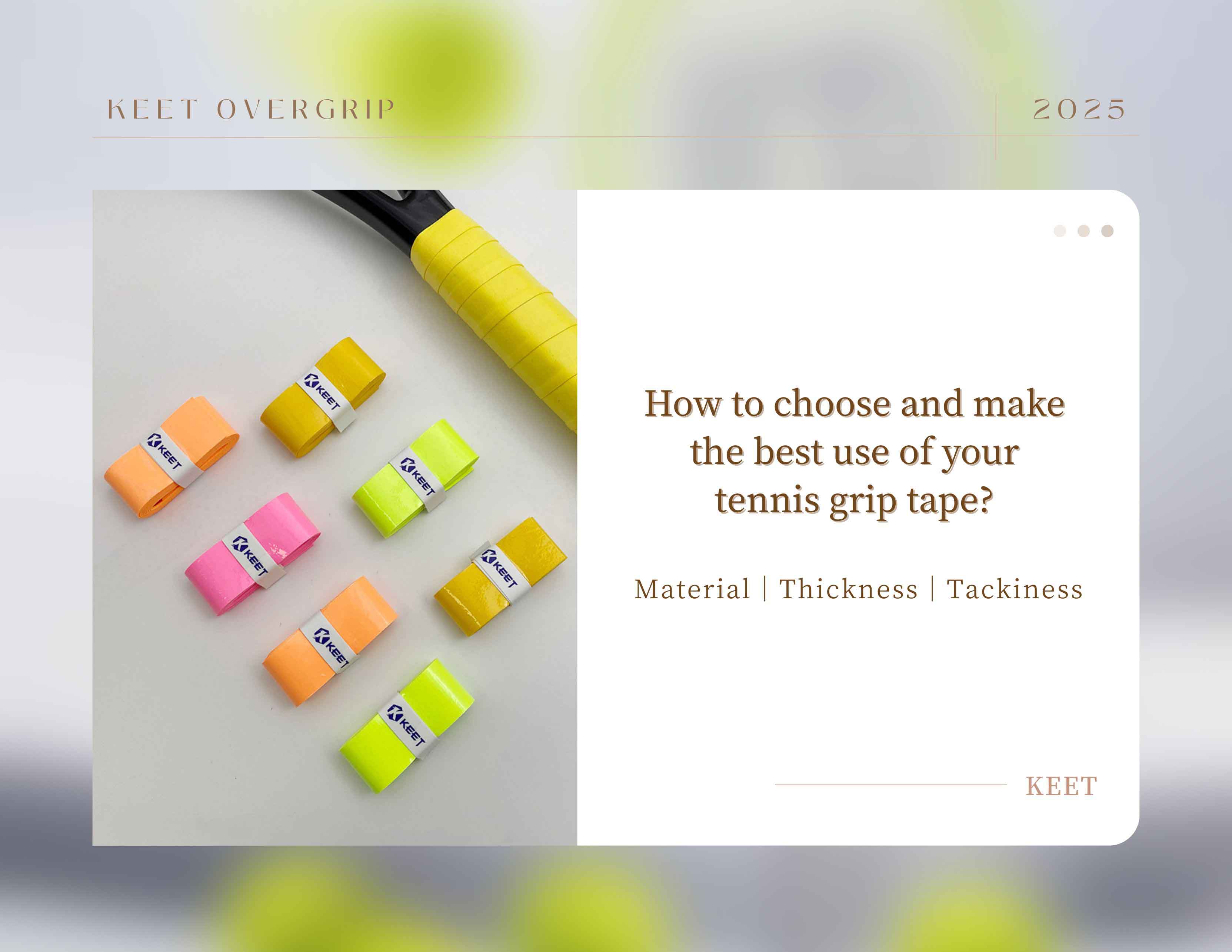How to choose and make the best use of your tennis grip tape?
Oct 27, 2025
On the tennis court, grip tape not only affects the stability of holding the racket but also directly relates to technical performance, comfort, and even the risk of sports injuries. How can you select the right grip tape from a dazzling array of products and use and maintain it scientifically? This article will reveal the correct way to use grip tape.
Step 1: Choose the right grip tape—triple considerations of material, thickness and tackiness.
Choosing grip tape is requires a comprehensive assessment based on individual needs, usage scenarios, and technical styles.
Material is the foundation. Currently, mainstream grip tapes are categorized into three types: PU grips, towel grips, and composite grips. PU grips are lightweight and breathable, suitable for players with less hand sweat or for summer use, with their surface particle texture design providing stable friction. Towel grips are renowned for their superior sweat absorption, making them a lifesaver for sweaty players or winter competitions, though they require frequent replacement. Composite grips balance performance and cost, offering a cost-effective choice.
Thickness determines grip feel. Thin-skin grip tapes conform closely to the hand shape, suitable for players seeking precise control, but offer weaker shock absorption. Thick-skin grip tapes, on the other hand, act like a soft cushion, significantly reducing the impact of racket handle vibrations on the elbow and enhancing comfort, making them ideal for power players.
Tackiness is crucial. Highly tacky grip tapes adhere tightly to the palm, making it difficult to slip even with sweaty hands, though they may leave marks upon removal. Low-tack grip tapes are easy to replace but require frequent grip adjustments. Professional players often choose based on court conditions: hard courts call for highly tacky grips to cope with rapid movements, while clay courts favor medium-tack grips to balance flexibility and durability.
Step 2: Make the best use of grip tape—maintenance and advanced techniques.
The lifespan of grip tape depends on usage intensity and maintenance methods. Scientific care can extend its performance cycle.
Cleaning matters. Towel grips can be gently hand-washed with a neutral detergent and laid flat to dry to restore their sweat absorption. PU grips can simply be wiped clean with a damp cloth. Store them away from humid environments, and consider using desiccants to prevent mold and hardening.
Advanced customization. If conventional grip tapes fail to meet your needs, consider customization services to showcase your individuality. Breaking free from the monotonous designs of traditional grip tapes, KEET Factory offers customization services such as embossing and pattern printing. Through technology, the factory transforms creativity into reality. This customization service is particularly popular among young players and trendy athletes, who express their attitudes and pursuits towards life through grip tapes. KEET's customization services not only pursue visual impact but also emphasize color accuracy and material compatibility, ensuring a harmonious blend of artistry and practicality.
The selection and use of grip tape essentially represent an art of integration between the player and the racket, silently playing a role in every swing and every shot. Wrapping grip tape is often the final step in a professional player's pre-match ritual—not just a technical preparation but also a psychological cue: by mastering the details, they establish absolute trust in their equipment. Next time you step onto the court, take an extra two minutes to check your grip tape: its condition might just quietly determine whether you can hit that decisive shot. After all, the charm of tennis lies not only in the clash of power and speed but also in the pursuit of perfection in every detail.

 Network Supported
Network Supported